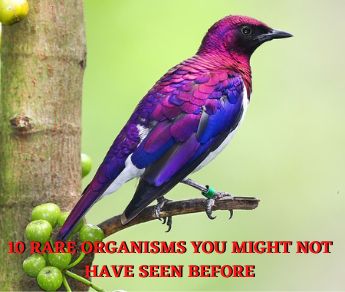The world we dwell in is both beautiful and strange, with many different species. Many of these unusual species are extremely rare and difficult to find. However, a few brave souls who happened to be in the right location at the right time were able to capture this endangered creatures. We’ve compiled a list of 15 of the world’s most unusual species that will astound our readers.
blue mycean
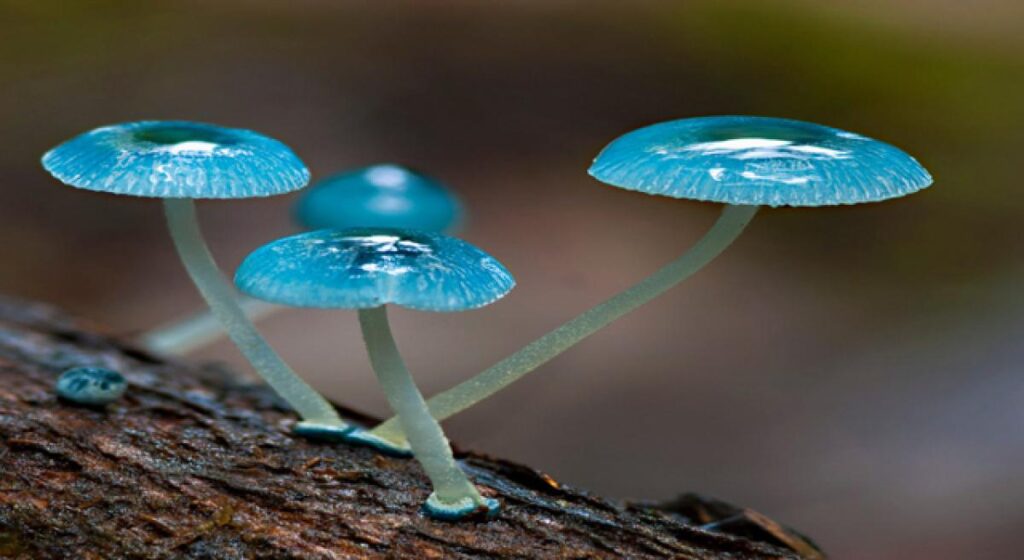
The mycean mushroom is an Australian species that can only be distinguished by its microscopic traits. It has over 33 species, several of which have bioluminescence traits that provide a “foxfire” glow. Mycena interrupta, often known as Pixie’s Parasol, is a blue mycean mushroom. It is a tiny blue mushroom with a stunning cyan blue colour.
The mushroom’s caps are spherical in shape, but as they grow, they expand into a broad convex shape and appear slimy. The mushrooms have a long stem and a white flat disc that attaches them to a wood surface. The gills of the mushroom are white with blue edges. On damp, woody surfaces, these magical mushrooms grow in small colonies.
amethyst starling

Because of its beautiful amethyst colour, the majestic amethyst starling is a sight to behold. The “plum-colored starling” or “violet starling” is another name for the amethyst starling. The bird is notable for its purple and indigo feathers with a hint of green and brown. It is native to tropical Africa. The microstructure of the bird’s feathers resembles a galaxy of iridescent patterns. The microstructure of the feather refracts light like a prism, resulting in a rainbow of hues.
Melanistic serval
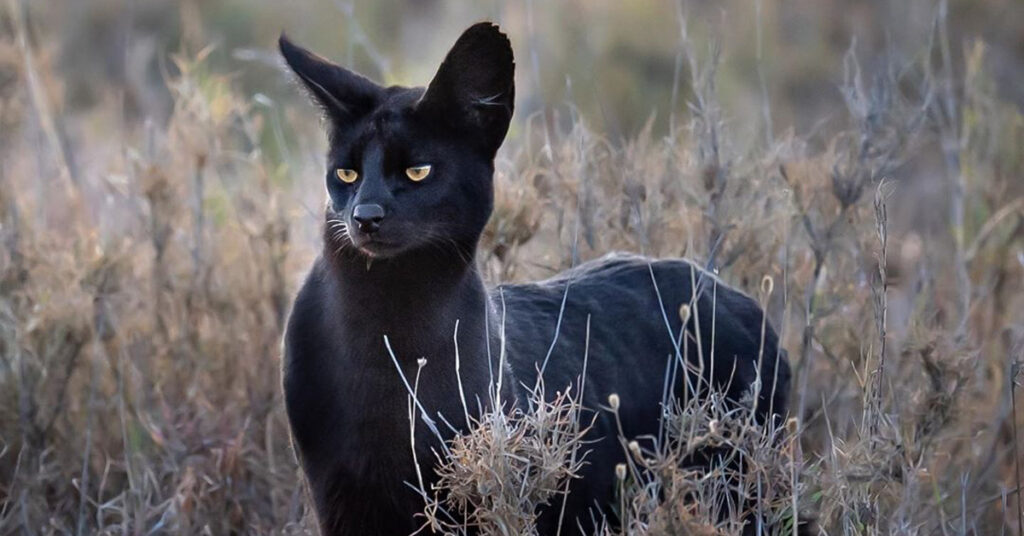
The serval is a wild cat species native to Africa. They are petite, slender cats with a golden-yellow buff coat with black stripes. Among these species, however, is the melanistic serval, a rare and secretive black cat. Sergio Pitamitz, a Kenyan photographer, captured this elusive species for the first time.
The animal is melanistic, meaning it has a gene mutation that causes it to have a darker skin tone than its regular relatives. This form of genetic mutation is extremely rare among servals, according to researchers, making it distinctive. Little is known about this elusive species, which prefers to live at higher altitudes where camouflage is easier.
Goth Chicken

The Ayam Cemani is an Indonesian chicken breed that originated in Sumatra. Cross-breeding is thought to have produced the chicken. In Bahasa Indonesia, the word “ayam” means “chicken,” while “Cemani” refers to the village where it originated. It’s thought that this unusual chicken was once employed for religious and mystical purposes. In Indonesia, it is only occasionally consumed.
The beak, tongue, meat, bones, and internal organs of the chicken are all black. The black colour is created by increased pigmentation in the tissues induced by fibromatosis, a hereditary disease. Despite their pigmentation, these birds lay conventional cream-colored eggs.
Papilio androgeus

Papilio androgeus is a butterfly species belonging to the Papilionidae family. The species is mostly found in Mexico, Florida, and Argentina. Cramer initially described the species in 1775, and it has three sexes: male, female, and gynandromorph. The butterfly’s thin, pointed tail and bluish crescents distinguish it from other species. Between the cell and the outer margin is a regular row of reddish yellow crescents.
The mosaic gynandromorphs of Papilio androgeus are unusual in that they have both male and female traits. The butterfly has bilateral gynandromorphism, as seen by its different wing hues. If you look attentively, you’ll notice that yellow indicates male characteristics and blue represents female characteristics.
Black Diamond apples

The Black Diamond apple is a rare variety from the Hua Niu family, sometimes known as “Chinese Red Delicious.” The apples have a distinctive dark purple skin that is due to their geographical origins. The waxy texture and diamond-like glitter of the apples give them their name. The apples are indigenous to Nyingchi, a small Tibetan town.
They are only sold at high-end supermarkets and are available in limited quantities. During the day, the city experiences an excess of ultraviolet light, with temperature swings at night. The fruit has developed a deep purple colour as a result of these dramatic variances. Despite its look, the apple’s pulp is white and juicy, just as regular apples.
Hymenopus coronatus
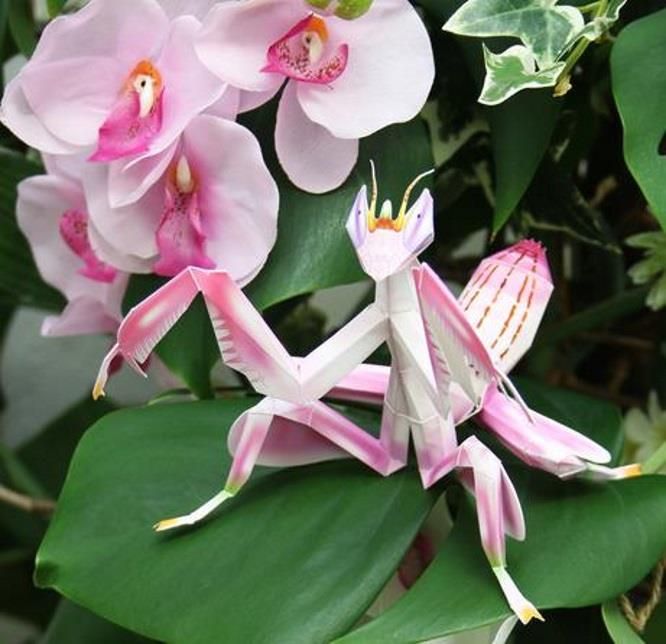
The orchid mantis, also known as Hymenopus coronatus, is a beautiful pink and white mantis that looks like flower petals. The uncommon mantis that looks like a walking orchid can be found in Southeast Asia’s tropical woods. The orchid mantis is distinguished by its beautiful colours and ability to quickly adapt to any habitat. The mantis is a master of disguise, imitating components of an orchid bloom.
The front pair of legs of the mantis mimic those of a walking flower, and they are employed to grasp their prey. The Hymenopus coronatus, like the Amethyst starling, has sexual dimorphism, which means that the males are smaller than the females. The orchid mantis is a popular insect breeder, yet it is both rare and expensive.
rhinoceros iguana
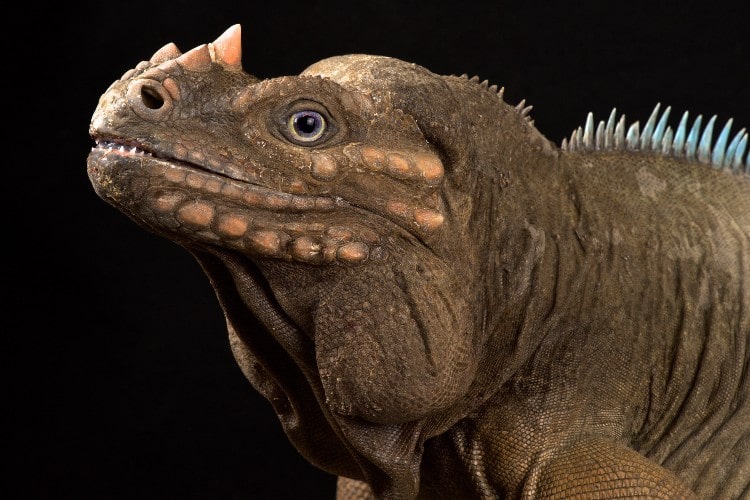
The rhinoceros iguana is a reptile that is unique to Hispaniola, a Caribbean island (Haiti and The Dominican Republic). The lizard’s name comes from a bony-plated pseudo growth on its snout that looks like a rhinoceros’ horn. The lizard has a thick body and black crossbands that range from dusky grey to olive green. The three horny lumps on its snout are its most distinguishing physical trait.
Kaputar pink slug
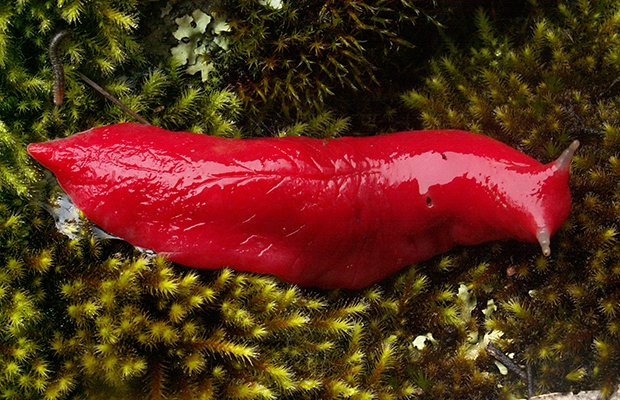
Triboniophorus aff. Graeffei, often known as the Kaputar pink slug, is a huge, neon, hot-pink slug species. The species is an air-breathing land slug that grows up to eight inches long and is exclusively found on Mount Kaputar in Australia. Mount Kaputar is an inland peak in northern New South Wales, near Narrabri.
The slugs thrived in high altitude conditions caused by a volcanic explosion on Mount Kaputar. These brilliantly coloured slugs prefer a damp environment and dwell in groups. They are shy creatures that lurk in the plant litter at the base of trees. Slugs are nocturnal invertebrates that climb trees to consume algae and mosses that grow there.
double-nosed, Andean tiger hound
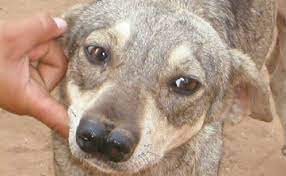
Colonel Percy Fawcett, an explorer, found the unusual double-nosed Andean tiger hound in 1913. He said he saw the typical dog breed deep in the Amazonian rainforest. The unique split nose of the rare breed of double-nosed dog is well-known. However, there are no official accounts that confirm the hounds’ existence. Only three times has the unusual dog breed been documented. Colonel John Blashford-Snell recently came upon the breed, a dog named “Xingu,” which means “not particularly attractive.”
In 2005, he met Xingu’s mother Bella, a double-nosed Andean tiger hound. Spanish conquistadors imported Pachon Navarro hunting dogs to the Amazon in the 16th century to aid in the tracking of jaguars. They are supposed to have a better sense of smell because of their split nose. The unique breed has been classed as a cryptozoological species and remains a mystery to this day.
Also Read – How Snakes Work


